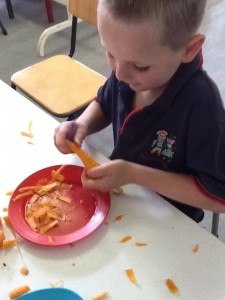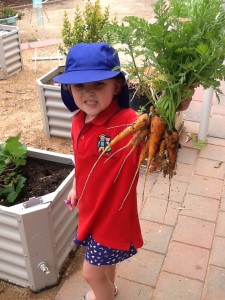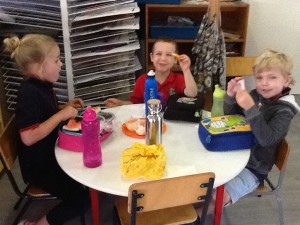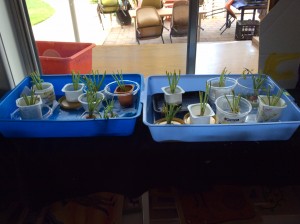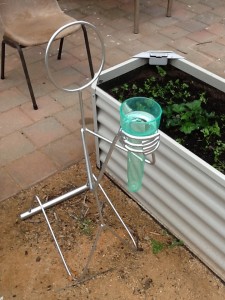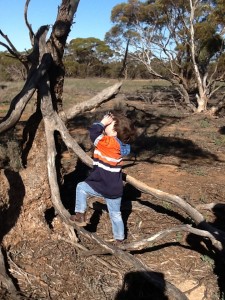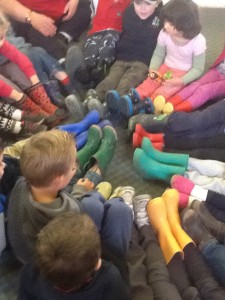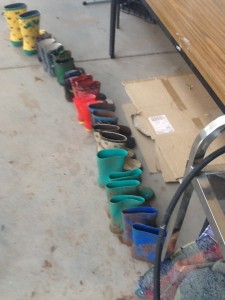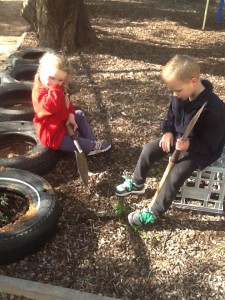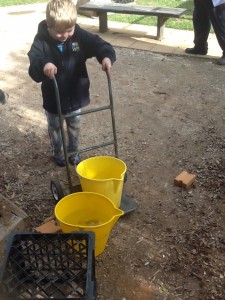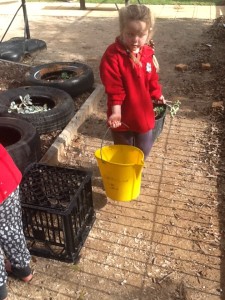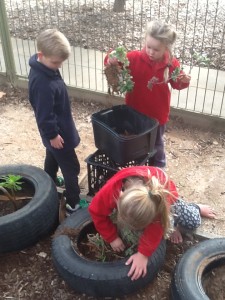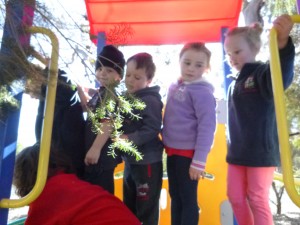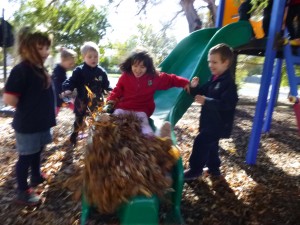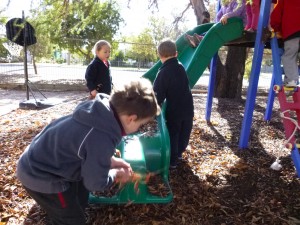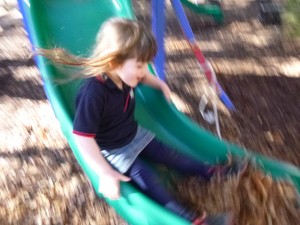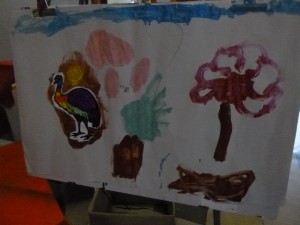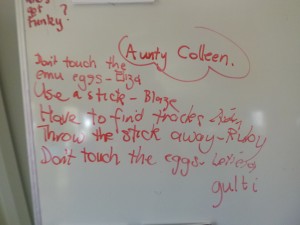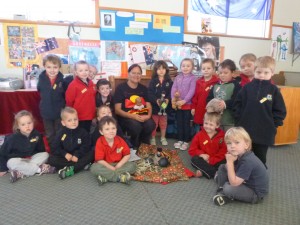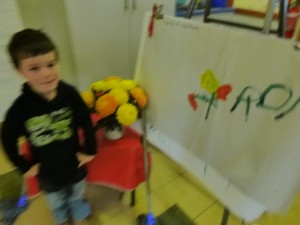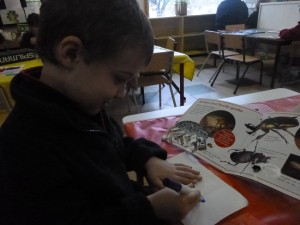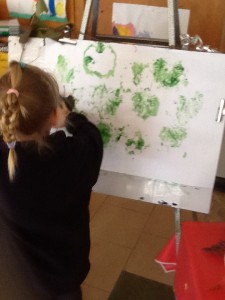
Keeping the Reggio maxim in mind that the environment is the third teacher, I used grape vine leaves to drape over the painting easels last week and this week. An invitation to notice and use the beautiful autumn leaves in some art. What would be the response? None! It seemed that the children’s own ideas for paintings were stronger than anything suggested by the leaves, in fact it seemed as if they didn’t notice them at all last week, and we didn’t bring them especially to their attention – it was an experiment. Their busy painting of everything BUT leaves made me think. The Reggio concept of ” environment” is a complex one, as learning itself is of course.
But on Thursday, Eliza made an accidental discovery. She painted near a leaf that was hanging down over her paper, so near that she went over the leaf. And she made a discovery, a leaf shape in her painting! Then she applied paint to the leaf and got the opposite effect, a leaf print.
Was Eliza’s noticing also sparked by the fact that she had also spent time using leaves, sticks, flowers and so on to make a leaf creature in its home? That here was a possibility to elaborate on the use of the leaves? Showing some of the other children inspired them to do some leaf printing as well. This involved looking closely at the leaves to pick the one they wanted and to apply the paint, and then to press the leaf firmly onto the paper. Making choices about the colours and placement of the leaves made this art process as individual as each child who participated.
Using the leaves gave the children another connection with the natural world , not necessarily something that will be articulated tomorrow, but hopefully contributing to a greater enjoyment of and valuing of the physical world around them.
